Nin is an ancient, royal city with a glorious past. As it was one of the 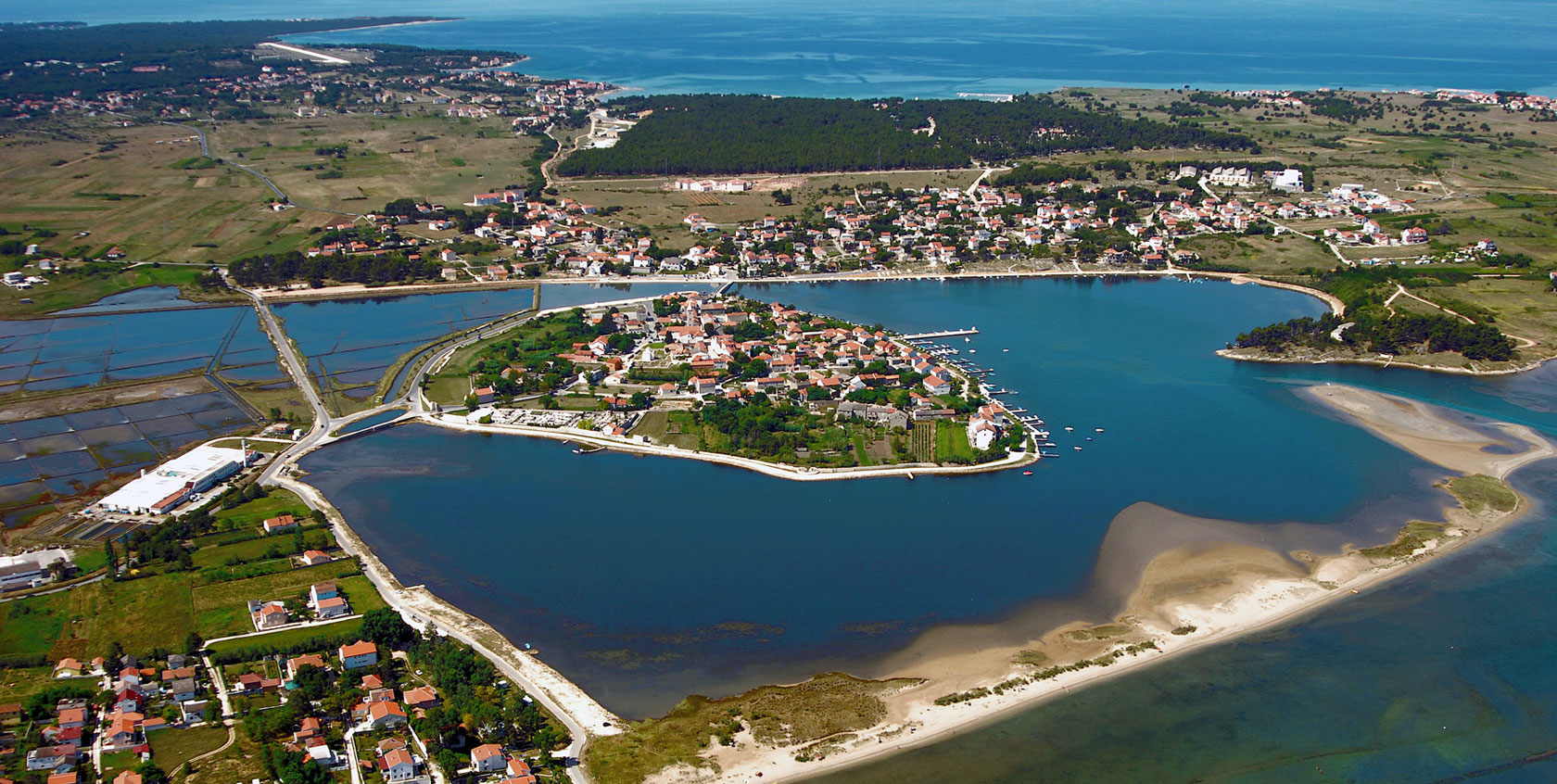 major cultural centres of the early Croatian state, it abounds in the monuments of specific early Croatian architecture from the 8th to the 11th centuries. A very interesting structure is the small early Croatian church of the Holy Cross from the 9th century, which is considered the smallest cathedral in the world. Another important sight is the treasury of golden and silver historical artifacts from Nin.
major cultural centres of the early Croatian state, it abounds in the monuments of specific early Croatian architecture from the 8th to the 11th centuries. A very interesting structure is the small early Croatian church of the Holy Cross from the 9th century, which is considered the smallest cathedral in the world. Another important sight is the treasury of golden and silver historical artifacts from Nin.
However, Nin is not only a historic town. Together with its surroundings, Nin offers excellent opportunities for vacations and recreation, especially for health tourism. Around Nin there are several long sand lagoons, far from the crowd, traffic connections and industrial zones, with outstanding microclimatic conditions. The shallow sea, indented into the mainland, has a temperature 2 or 3 °C higher than the open sea. Salinity and aerosol are also higher. The sea-water is very clear and clean (due to shallowness there is almost no maritime traffic). Here are also the largest deposits of medicinal mud (peloid) on the Adriatic.
Peloid medicinal mud (Blato)
Peloid (called “blato” in Croatian) is a type of natural, medicinal mud used for therapy purposes. Peloids consist of minerals formed over many years by geological, biological, chemical and physical processes. Peloid medicinal muds have been used for treatment since Roman times.
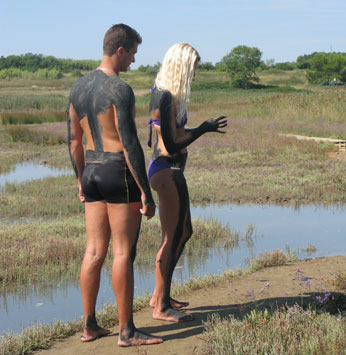 * The largest, natural deposits of this medicinal mud on the Adriatic are only a minute walk in front of our Aurora Apartments.
* The largest, natural deposits of this medicinal mud on the Adriatic are only a minute walk in front of our Aurora Apartments.
Peloid treatments have been used for rheumatic disorders, osteo-arthritis, gynecological disorders, sciatica, skin diseases, trauma and many more various afflictions and ailments. The sea, heated by the sun rays makes it possible to prolong the therapy, especially for the rheumatic and arthritis diseases.
Applying peloid masks once a week helps to revitalize and tighten the skin, as well as bind fluids in the skin layers. Regular use of these peloids cause wrinkles to disappear, and prevents new wrinkles from appearing.
NIN
Nin, a coastal town in the southern part of the Nin Bay on the Zdrijac peninsula, 17 km north of Zadar; population of 1,700. It developed on a low alluvial peninsula, which was converted into an islet by a canal dug in the 14th century; connected with the mainland by small bridges. Economy is based on farming, growing of vines, olives and fruit, fishing and tourism. Nin lies on the regional road.
Numerous restaurants and taverns offer specialties of both domestic and international cuisine. Sports and recreational opportunities include also sports fishing and hunting. The art gallery “Viseslav” organizes exhibitions of well-known Croatian painters and artists throughout the year. Entertainment programs are frequently organized in the summer months.
North of Nin (13 km) is the islet of Zecevo, separated 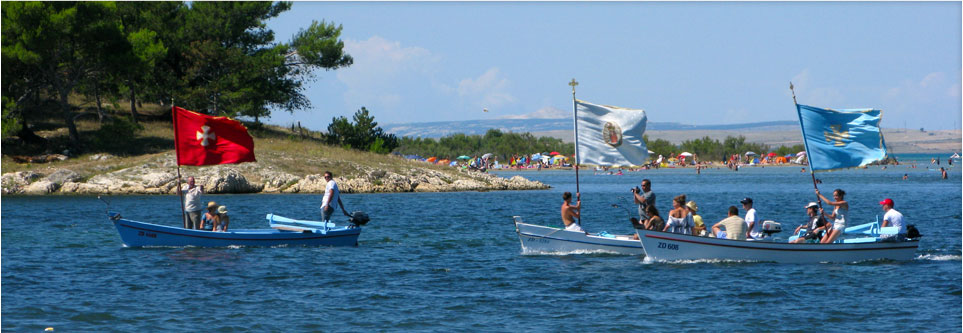 from the mainland by a shallow gulch. During low tide, this may be crossed on foot. Monks and hermits built a small church on the islet and dedicated it to Our Lady of Zecevo. In 1500, the Turks set the church and the monastery on fire. A legend has it that they threw the statue of Our Lady of Zecevo into the sea. However, the statue reached the shores of Nin. This event has been commemorated on the 5th of May every year when the statue of Our Lady is taken to Zecevo with a procession of boats.
from the mainland by a shallow gulch. During low tide, this may be crossed on foot. Monks and hermits built a small church on the islet and dedicated it to Our Lady of Zecevo. In 1500, the Turks set the church and the monastery on fire. A legend has it that they threw the statue of Our Lady of Zecevo into the sea. However, the statue reached the shores of Nin. This event has been commemorated on the 5th of May every year when the statue of Our Lady is taken to Zecevo with a procession of boats.
History
The area around Nin was populated as early as the 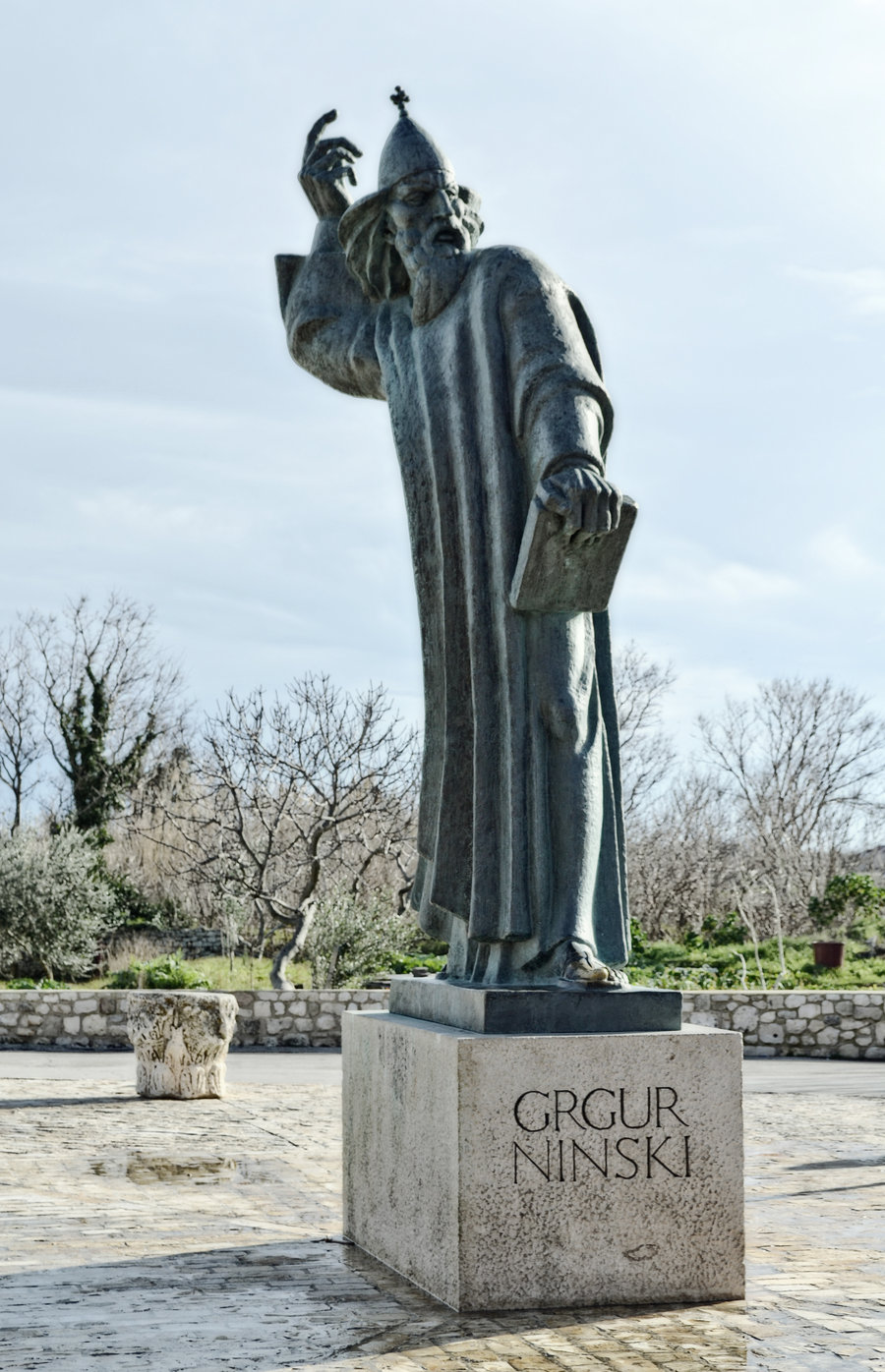 prehistoric times. In Roman times, Nin (then called “Aenona“) was an important centre of the ancient Liburnia and was granted municipal self-government. The Croatian medieval settlement was mentioned under the name of Nona by Constantine Porphyrogenitus (10th c.). During the period of national rulers, Nin was the parish seat and the seat of the “Croatian bishop”, whose jurisdiction stretched all over the entire territories of Croatia. Nin was the residence of Croatian kings and occasionally also the place where diets and synods were taking place. From the 12th century, Nin recognized the power of Hungarian-Croatian rulers. In 1328, it came under the protection of Venice (privilege deed from 1329) and remained under the Venetian rule until 1797, with an interruption from 1358 to 1409.
prehistoric times. In Roman times, Nin (then called “Aenona“) was an important centre of the ancient Liburnia and was granted municipal self-government. The Croatian medieval settlement was mentioned under the name of Nona by Constantine Porphyrogenitus (10th c.). During the period of national rulers, Nin was the parish seat and the seat of the “Croatian bishop”, whose jurisdiction stretched all over the entire territories of Croatia. Nin was the residence of Croatian kings and occasionally also the place where diets and synods were taking place. From the 12th century, Nin recognized the power of Hungarian-Croatian rulers. In 1328, it came under the protection of Venice (privilege deed from 1329) and remained under the Venetian rule until 1797, with an interruption from 1358 to 1409.
Heritage
Remains of the ancient settlement on the islet include the 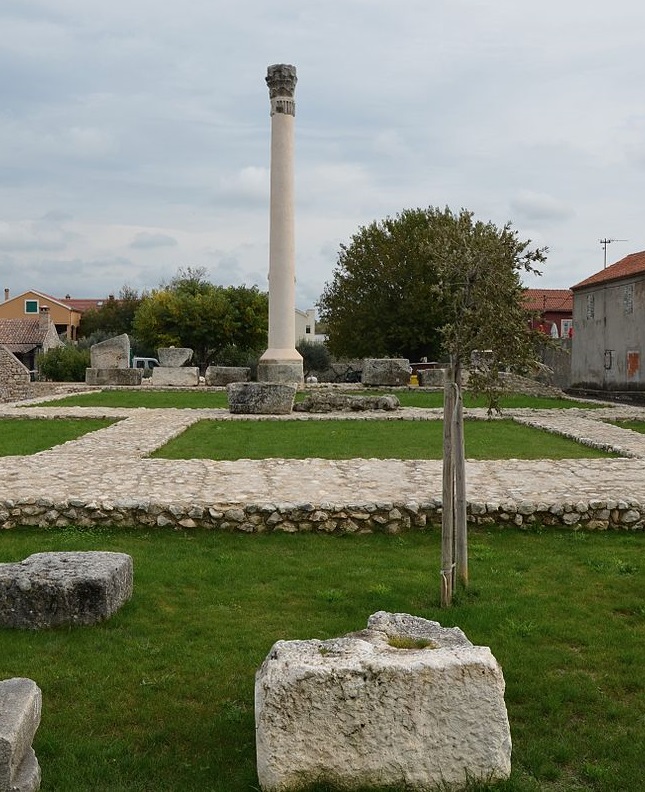 remains of a forum, upon which a monumental temple from the 1st century was built. In the later periods of the Empire the temple had the function of an Augusteum, so it has been assumed that it had housed the statues of Roman emperors found in the forum (today kept at the Archaeological Museum in Zadar). Pre-Romanesque remains are represented by a small church of the Holy Cross, with a cross-shaped ground-plan and a cupola. It has the adorned stone lintel with the carved name of the prefect Godezav. The inscription with the name of Duke Branimir (second half of the 9th c) originates from the former church of St. Michael, today kept in the church of the Holy Cross. The present parish church of St. Anselmo was built on the location of an old Romanesque-Gothic cathedral, whose remains include a side chapel and the reliefs of saints, built-in along the northern portal. Its treasury keeps reliquaries from around AD 800. The main altar of the side chapel features a Gothic sculpture of Madonna with Child. The hexagonal stone baptismal font with the inscription mentioning Duke Viseslav (around 800) also originates from Nin; today it is kept at the Museum of Croatian Archaeological Monuments in Split. Parts of the walls have been preserved of the mediaeval fortification system. The local Archaeological Collection keeps stone fragments from ancient and mediaeval times. Close to Nin, along the road toward Zaton, is a small pre-Romanesque church of St. Nicholas in Prahulje (11th c.), erected on a prehistoric mound. It has a trefoil ground-plan and a cupola, above which an observation tower was built during the wars with the Ottoman Turks.
remains of a forum, upon which a monumental temple from the 1st century was built. In the later periods of the Empire the temple had the function of an Augusteum, so it has been assumed that it had housed the statues of Roman emperors found in the forum (today kept at the Archaeological Museum in Zadar). Pre-Romanesque remains are represented by a small church of the Holy Cross, with a cross-shaped ground-plan and a cupola. It has the adorned stone lintel with the carved name of the prefect Godezav. The inscription with the name of Duke Branimir (second half of the 9th c) originates from the former church of St. Michael, today kept in the church of the Holy Cross. The present parish church of St. Anselmo was built on the location of an old Romanesque-Gothic cathedral, whose remains include a side chapel and the reliefs of saints, built-in along the northern portal. Its treasury keeps reliquaries from around AD 800. The main altar of the side chapel features a Gothic sculpture of Madonna with Child. The hexagonal stone baptismal font with the inscription mentioning Duke Viseslav (around 800) also originates from Nin; today it is kept at the Museum of Croatian Archaeological Monuments in Split. Parts of the walls have been preserved of the mediaeval fortification system. The local Archaeological Collection keeps stone fragments from ancient and mediaeval times. Close to Nin, along the road toward Zaton, is a small pre-Romanesque church of St. Nicholas in Prahulje (11th c.), erected on a prehistoric mound. It has a trefoil ground-plan and a cupola, above which an observation tower was built during the wars with the Ottoman Turks.
